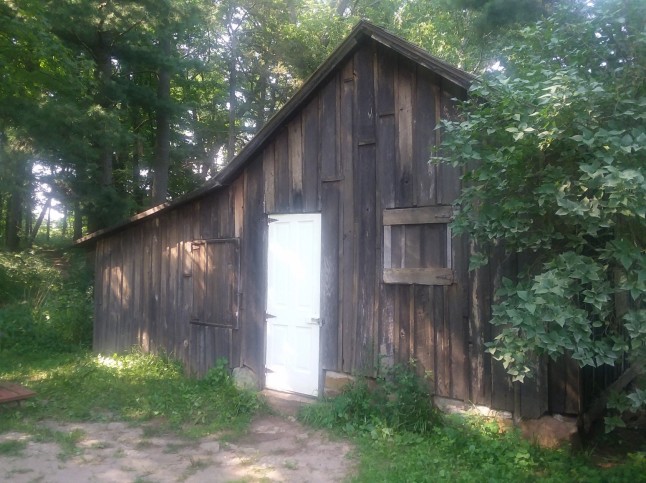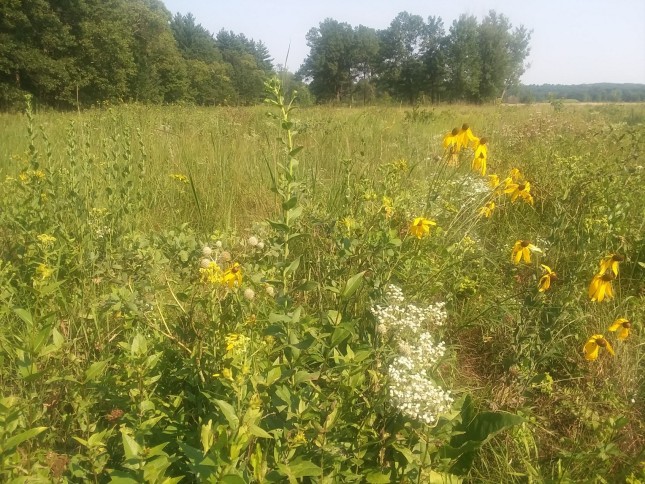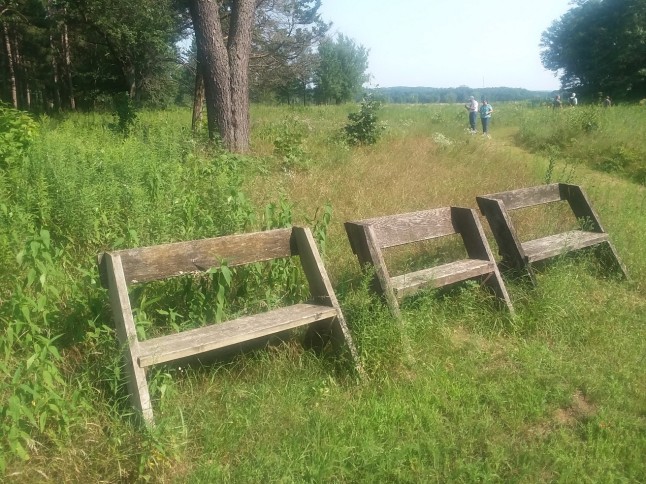Today’s guest post is by Steve Hopkins, Nonpoint Source Coordinator with the Iowa Department of Natural Resources Watershed Improvement Section.
I had the privilege of visiting the legendary Aldo Leopold farm and shack near Baraboo, Wisconsin last August while attending the Soil and Water Conservation Society’s annual conference. Although I had completed my master’s degree just down the road at the University of Wisconsin-Madison, I had never before visited the Leopold farm. It was in many ways a pilgrimage to a sacred place. Leopold Shack near Baraboo, Wisconsin (photo by Steve Hopkins)
Leopold Shack near Baraboo, Wisconsin (photo by Steve Hopkins)
While standing in awe in front of the Leopold shack, amidst the towering pines and deep-rooted prairie plants that the Leopold family had planted back in the 1930s, I was struck with the meaning behind Leopold’s concept of “Thinking Like a Mountain” in his 1944 essay bearing that name.
Leopold came up with the concept after watching a wolf die that he had shot, and seeing the “fierce green fire dying in her eyes.” Although he had previously been a staunch proponent of killing wolves with the idea of increasing the number of deer (which he and others wanted more of for hunting), he later realized that removing wolves resulted in an overpopulation of deer. Too many deer meant overgrazing and over-browsing of vegetation on the mountain, and the eventual destruction of the mountain from erosion. Watching the wolf die was a pivotal event for Leopold—one that deeply affected his thinking about the value of predators to keep ecosystems in balance, and reinforced his understanding that removing even a single species can have serious negative consequences on the environment.
As Leopold wrote in 1944 in “Thinking Like a Mountain” (from Flader, 1974, p. 1)¹:
“We reached the old wolf in time to watch a fierce green fire dying in her eyes. I realized then, and have known ever since, that there was something new to me in those eyes—something known only to her and to the mountain. I was young then, and full of trigger-itch; I thought that because fewer wolves meant more deer, that no wolves would mean hunters’ paradise. But after seeing the fierce green fire die, I sensed that neither the wolf nor the mountain agreed with such a view.”
“Thinking Like a Mountain”, therefore, means we need to consider the importance of ecological balance—including the value of a single species of predator—in our land use decision-making and actions. When we remove even one single species from the ecosystem, it can have dire consequences. It means we need to see things from the mountain’s perspective before acting.

 World’s 2nd oldest restored prairie, Leopold Farm, Baraboo, Wisconsin (photo by Steve Hopkins)
World’s 2nd oldest restored prairie, Leopold Farm, Baraboo, Wisconsin (photo by Steve Hopkins)
Likewise, for those of us working to improve the health of watersheds, we need to be “thinking like a watershed.” This means we need to consider the consequences of even a single action on the health of a watershed before acting.
Healthy watersheds are those that act like a sponge to soak in rainfall, enabling the watershed to minimize flooding and reduce runoff that carries pollutants to our lakes, rivers, and streams. Every time a single action takes place that adds more runoff in a watershed, such as adding more paved areas or converting land from soil-covering, deep-rooted perennials to tilled row crops, it reduces the watershed’s ability to act like a sponge and soak in rainfall. When this happens, a watershed “catches” less and “sheds” more. When multiple “single actions” take place in a watershed, it results in flooding and water quality problems. Our primary course of action after that point is to invest lots of time, money, and energy to fixing the flooding and water quality problems that we did not prevent in the first place.

Many of us are already very well aware of the many practices that are available to soak in, trap, or store rainfall before it runs off our watersheds in Iowa. Many are also working to develop detailed watershed improvement plans to help fix flooding and water quality problems across the state. Just as Aldo Leopold advised us to incorporate “thinking like a mountain” into our actions to improve ecosystems, we would be wise to incorporate “thinking like a watershed” into each of our plans and actions to improve watersheds. I suspect Leopold would agree.
Reference:
¹Flader, Susan L., Thinking Like a Mountain: Aldo Leopold and the Evolution of an Ecological Attitude toward Deer, Wolves, and Forests (University of Wisconsin Press, 1974).
 Leopold benches at the Leopold Farm, Baraboo, Wisconsin (photo by Steve Hopkins)
Leopold benches at the Leopold Farm, Baraboo, Wisconsin (photo by Steve Hopkins)